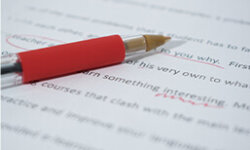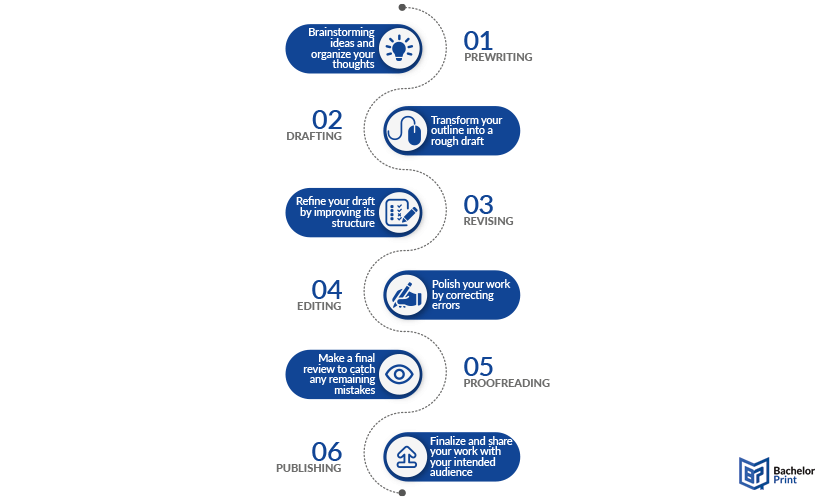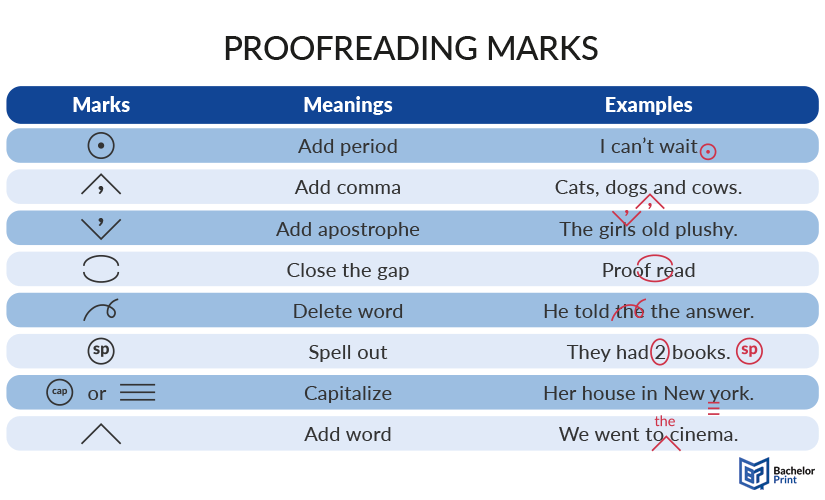
Proofreading is essential to the writing process, yet is often overlooked. Some students make the mistake of submitting their academic essays or papers without first checking and correcting them thoroughly. This blog post will give you many helpful tips and clarifications about proofreading, from the best services, to how to become a proofreader, and the difference between proofreading and editing. So, read on.
Definition: Proofreading
Proofreading is the final step when it comes to the writing process, whether academic or professional. It ensures that there are no punctuation, grammar, or spelling mistakes before the author’s manuscript is submitted. This step also involves verifying that the text is clear and consistent with its intended audience. In academic writing, for example, careful typographical review is essential. Especially in print publishing, proofreaders must check for formatting errors, such as missing or incorrect page numbers.

Proofreading vs. editing
As mentioned before, proofreading focuses on checking and correcting text, basically cleaning up any surface-level mistakes before you publish or submit your work. However, when it comes to editing, it is done prior since editors examine the document more critically by adjusting formulations to make text more readable, e.g., turning a passive voice into an active one or breaking up longer sentences. Other differences are listed in the table below.
| Proofreading | Editing |
| Grammar correction | Citation assessment |
| Spelling correction | Layout check |
| Punctuation correction | Formatting correction |
| Minor formatting correction | Clarity & style check |
So, editing comes first and is mostly done by the writers themselves. A professional editor can then perform thorough work by doing grammar and style revisions before the text is proofread in the final step.
How to become a proofreader
Chances of securing a job as a proofreader are higher with postsecondary education, such as a bachelor’s degree in English, creative writing, or journalism. A degree can help you deeply understand the English language and give you better writing skills compared to the average person. For the most part, proofreaders can earn an annual salary of around $48,000. Of course, this depends on your qualifications and the industry you are working in.
Human vs. AI proofreading
Below, we’ve listed a few popular human proofreading services and AI tools, examined their prices for dissertation proofreading (10,000 words & 36 pages), and listed their strengths.
Human
Human proofreaders and editors bring a level of attention to detail that AI tools simply can’t replicate. As they have years of experience and a great understanding of context, proofreaders can spot inconsistencies, awkward phrasing, and subtle errors that automated tools might overlook.
Fiverr
Fiverr is a freelance platform for both short and long projects. The proofreaders on this site offer services at various price points, so clients can choose editors based on reviews, expertise, and turnaround time.
- Many experts to choose from
- Basic, standard & premium packages
- Easy way to contact editors
- Seller reviews available
- Variety of payment methods
- $165 in 24 hours
- $105 in 48 hours
- $110 in 72 hours
- $100 in 4 days
- $175 in 4 days
- $180 in 10 days
Note: Prices may vary depending on the seller and packages.
Scribbr
Scribbr specializes in academia; however, they also edit professional and business documents. This website offers services from over 800 native editors with a focus on structure, clarity, formatting, and proper citation. These editors will be handpicked based on your field of study and document type.
- Structure check
- Clarity check
- Paper formatting
- Citation editing
- $498 in 7 days
- $658 in 3 days
- $818 in 24 hours
- $1,138 in 12 hours
Note: Prices can be lower or higher depending on the services you need and the citation amount. In this example, we used 30 citations for university/college education.
PaperTrue
With four locations, PaperTrue has a team of native English speakers from all around the world, meaning their team is available 24/7. Their editors are hand-selected with years of experience in various fields and are put through a rigorous editing and language proficiency test. They focus on academia, authors, business, and provide services for job applicants.
Proof Reading, LLC
Proof Reading, LLC provides professional editing services since 2005 and are a team of full-time US-educated, professional proofreaders. They focus on editing essays, dissertations, and business documents, and they even offer a loyalty program for repeat clients.
- Grammatical and punctuation errors
- Incorrect word use or choice
- Missing prepositions and articles
- Unclear pronoun references
- Singular and plural agreement
- Subject-verb agreement
- Incorrect verb form or tense
- Citation & references check
- Formatting check
- Free revision possible
- $455 in 72 hours
- $546 in 48 hours
- $637 in 24 hours
- $728 in 10 hours
- $818 in 6 hours
- $955 in 3 hours
AI
AI-powered proofreading tools are quickly becoming a popular choice for quick and efficient document and dissertation checks. These tools use advanced algorithms and machine learning to spot grammar mistakes, spelling errors, and style inconsistencies.
However, with technology, new problems arise. Some universities and colleges have banned AI tools, arguing that education is about learning, and using AI can bypass that learning process that helps students recognize and correct their own mistakes. Not to mention that using AI for your academic work is plagiarism. Artificial intelligence can’t understand context, making text sound more “robotic.”
In short, AI can be helpful for basic drafts, brief paragraphs, casual documents, and technical writing, but text should definitely be proofread by a human in the end. As Frank Herbert said, “Ideas are dime a dozen. Execution is where it counts.”
ProWritingAid
ProWritingAid is a toolkit for students and storytellers that offers writing styles ranging from academic to creative, in-depth chapter feedback, “show, don’t tell” suggestions, grammar checking, and many more. They also offer masterclasses from writing experts including college professors.
- Grammar check
- Rephrasing
- Editing
- Feedback
- Sensory report
- Plagiarism checker
- Transition checks
- Author comparison
- Free extension with grammar checker
- ProWritingAid for Education is free for verified educators & their students
- $120 a year with unlimited word count & rephrases
- $144 a year with three daily chapter critiques
Grammarly
Grammarly is an AI writing partner that helps the average person get their point across by fixing typos, grammar and spelling errors. It works across all apps and websites and is used by many companies and schools.
Scribbr
Scribbr also offers AI tools such as a grammar checker, AI-proofreading, paraphrasing tool, summarizer, and more features for students.
LanguageTool
LanguageTool is an AI-based grammar checker that can be added as an international web extension for free, or can be simply used for Word, LibreOffice, and Google Docs documents. It also has a paraphrasing tool.
Mistakes are human, but even AI can make mistakes. Don’t solely rely on spelling and grammar checkers because they sometimes cannot recognize common grammatical errors. For example, “I don’t except your apology” might not be recognized as an error because “except” is an existing verb, albeit the wrong one as it should be “accept” instead. AI is, after all, only as good as the code behind it.
Proofreading tips
Good proofreading requires more than just reading through a document. By following these key tips you can improve your chances of catching your or someone else’s errors.
- Edit before proofreading
- Take a break between sections
- Pick a productive time to proofread
- List your most common errors
- Look for spelling mistakes & punctuation errors separately
- Print out your document
- Read your writing backwards, sentence by sentence
- Read it aloud or use a Read Aloud function
- Ask a friend to proofread it
Proofreading marks
Proofreading marks are symbols that proofreaders use to indicate corrections in a document. In the imagine below, you can find the most common ones.

FAQs
You should familiarize yourself with common grammar and spelling rules, and punctuation. Practice reading your text carefully and focus on one element at a time, e.g., sentence structure. Grammar checks can help identify your common mistakes while you build your skills.
Editing involves making major changes to a text and can include rewriting sentences or paragraphs. Proofreading is the final step before publishing or submitting works that focus on surface-level mistakes like formatting errors.
You can start taking specialized courses, earn certifications, or a degree in English or journalism. You can look for freelance opportunities or apply for positions with editing and publishing companies.
Depending on the complexity of the document and the proofreader’s experience, proofreading rates can often range from $15 to $50 for 1,000 words.
